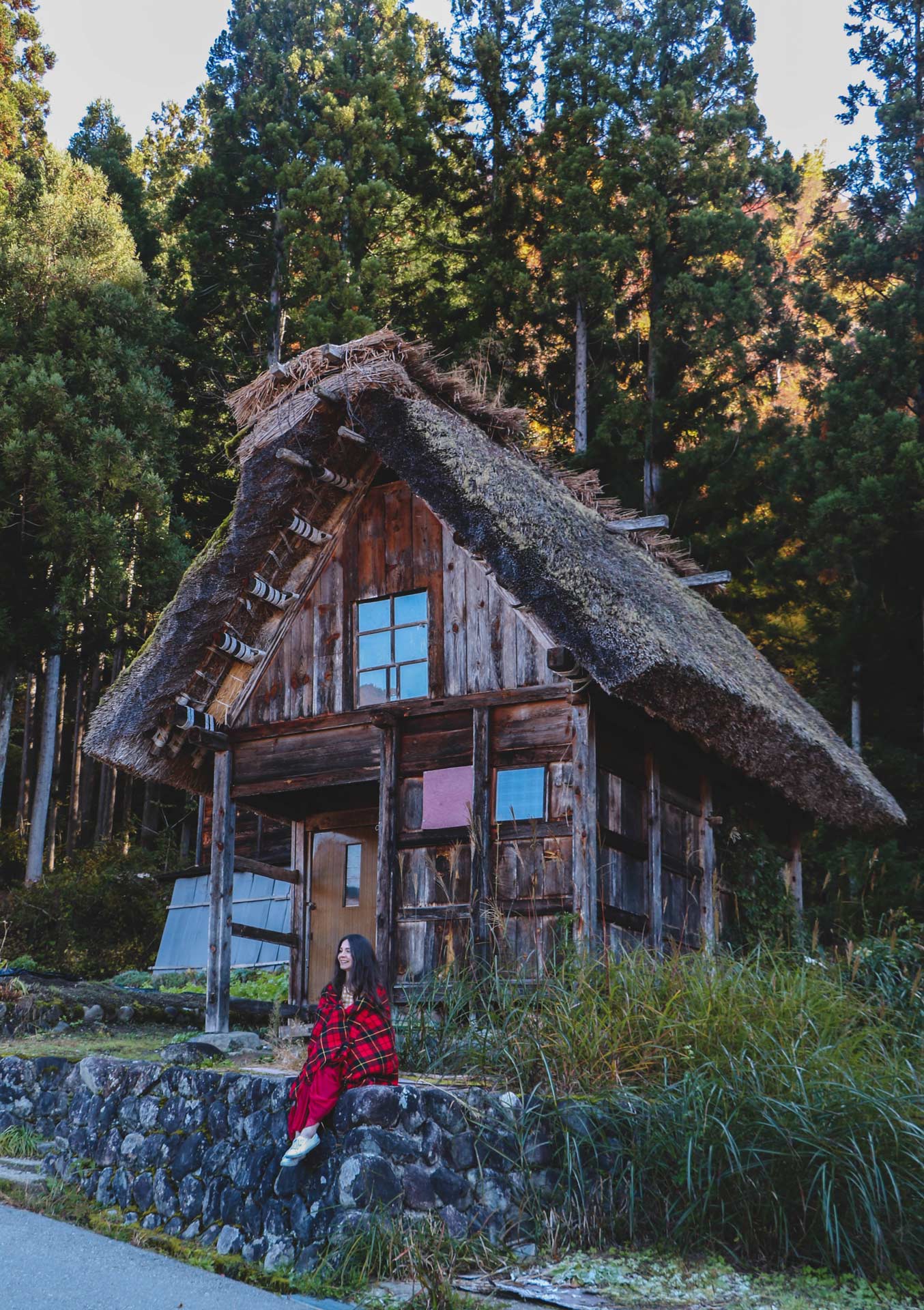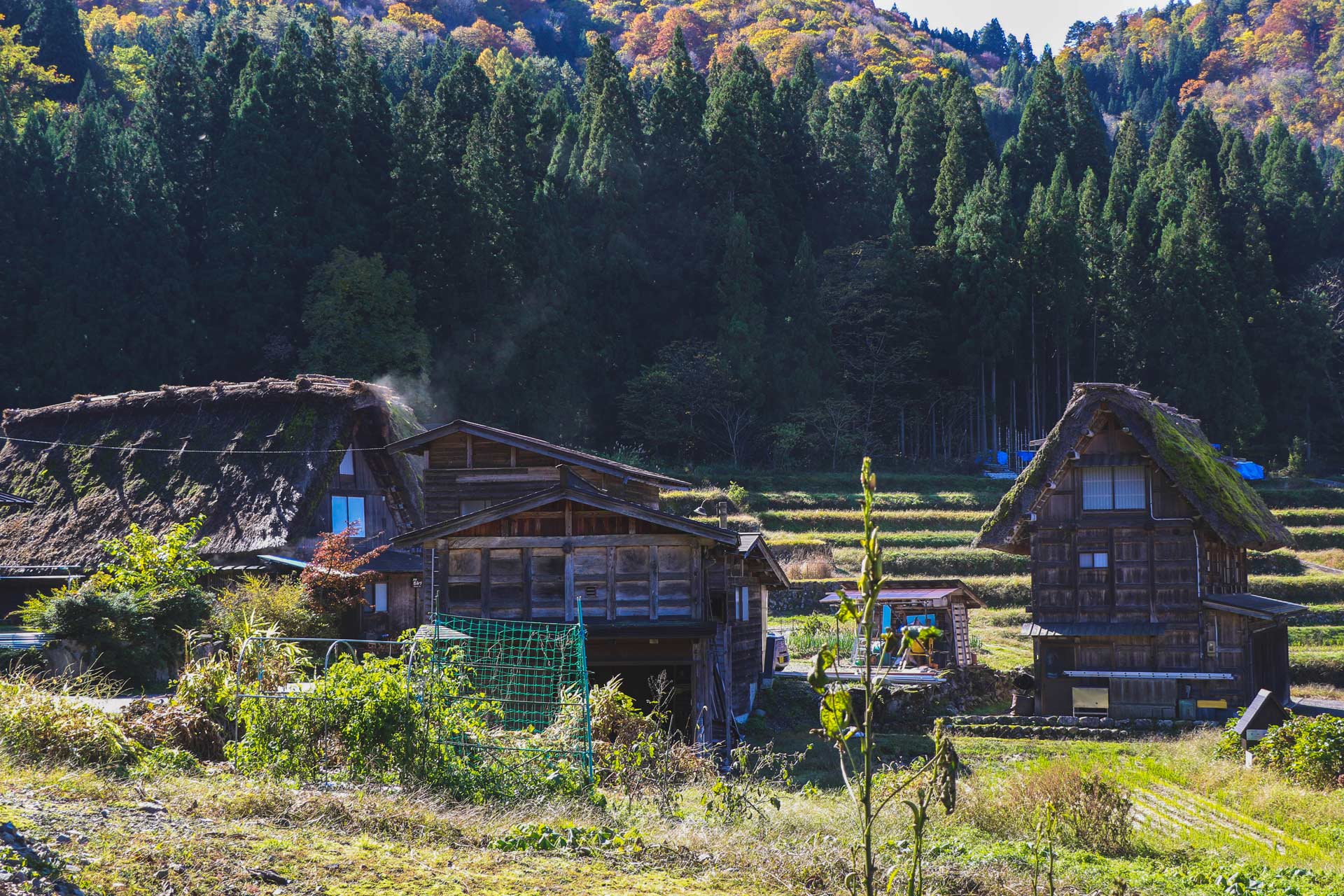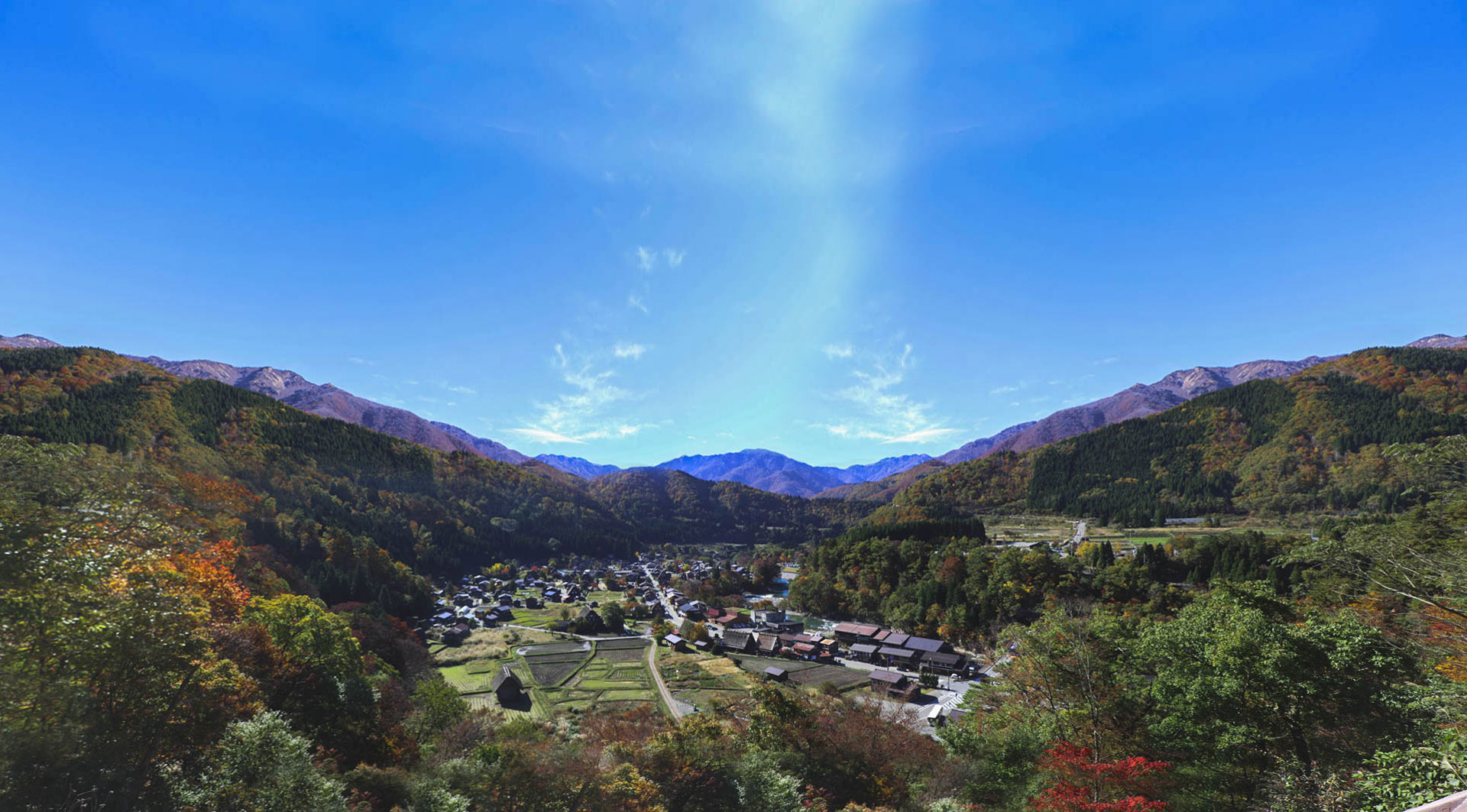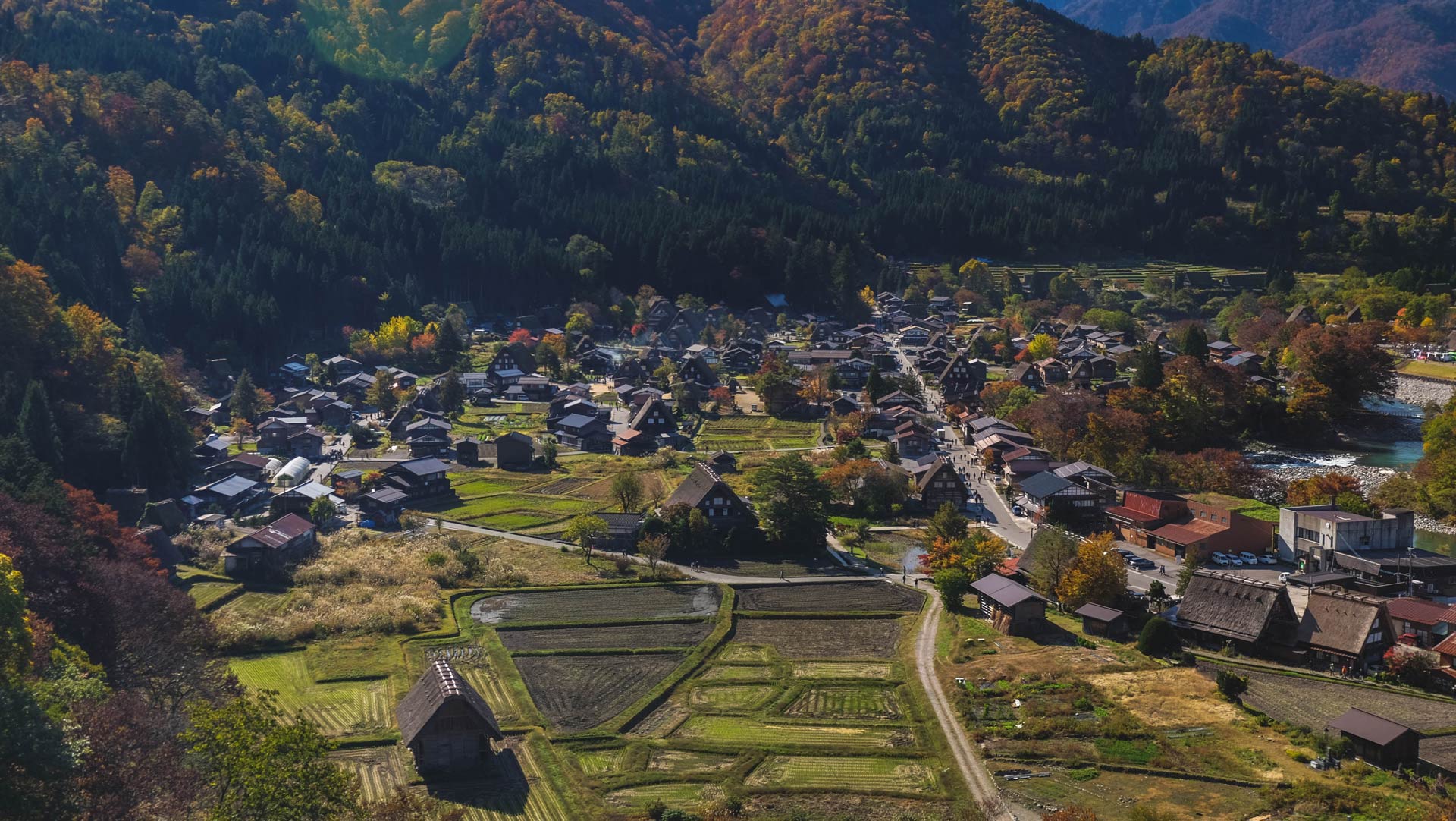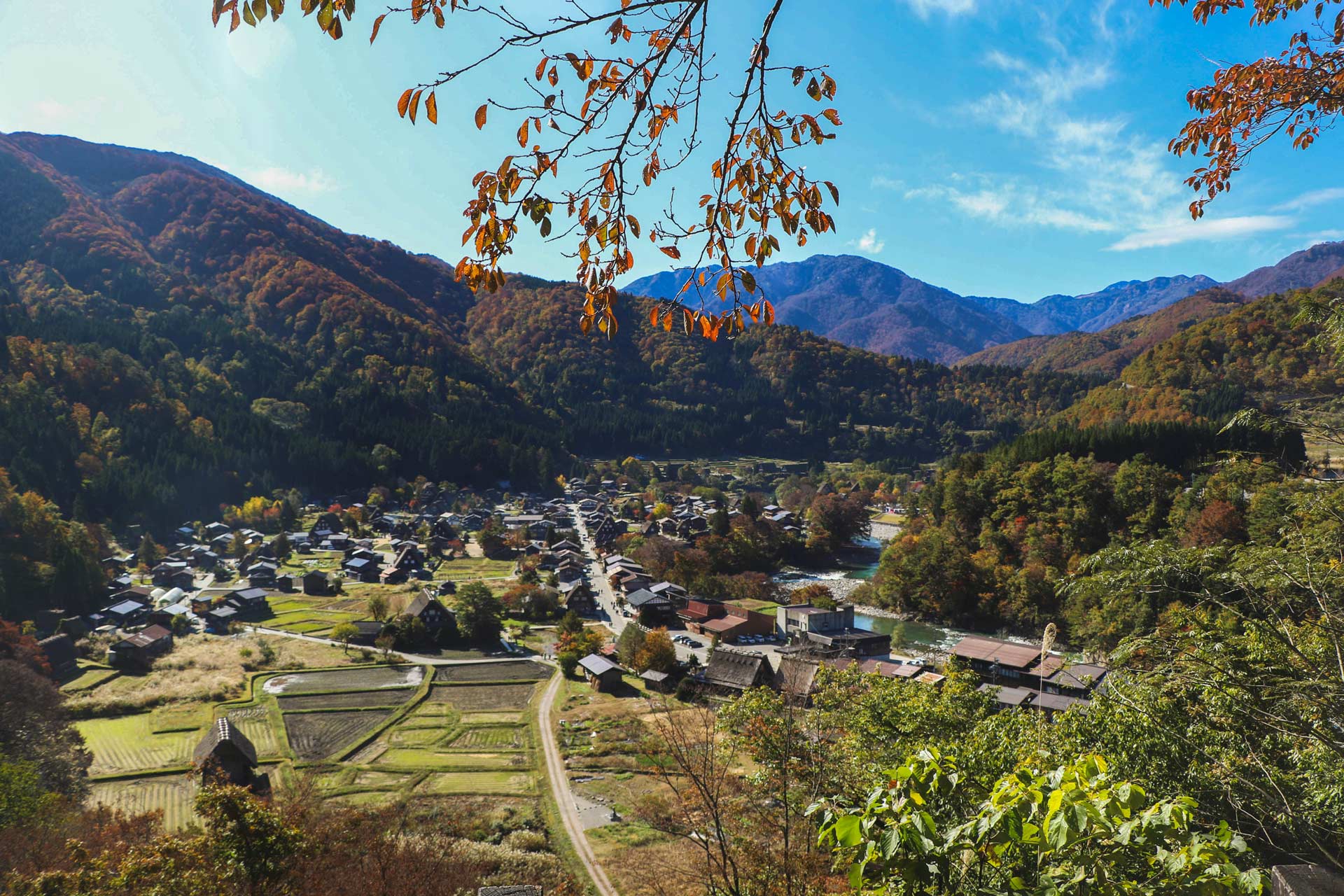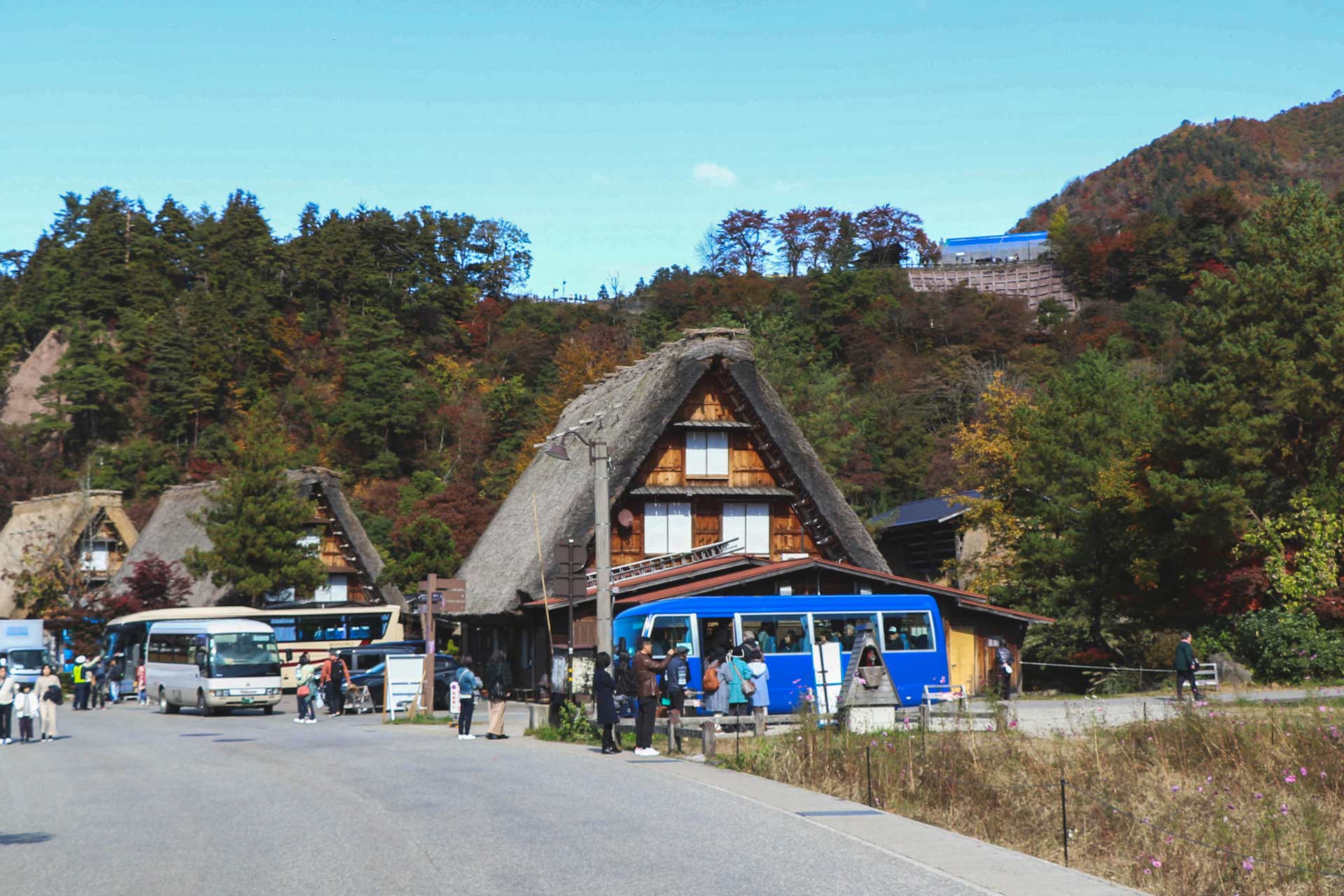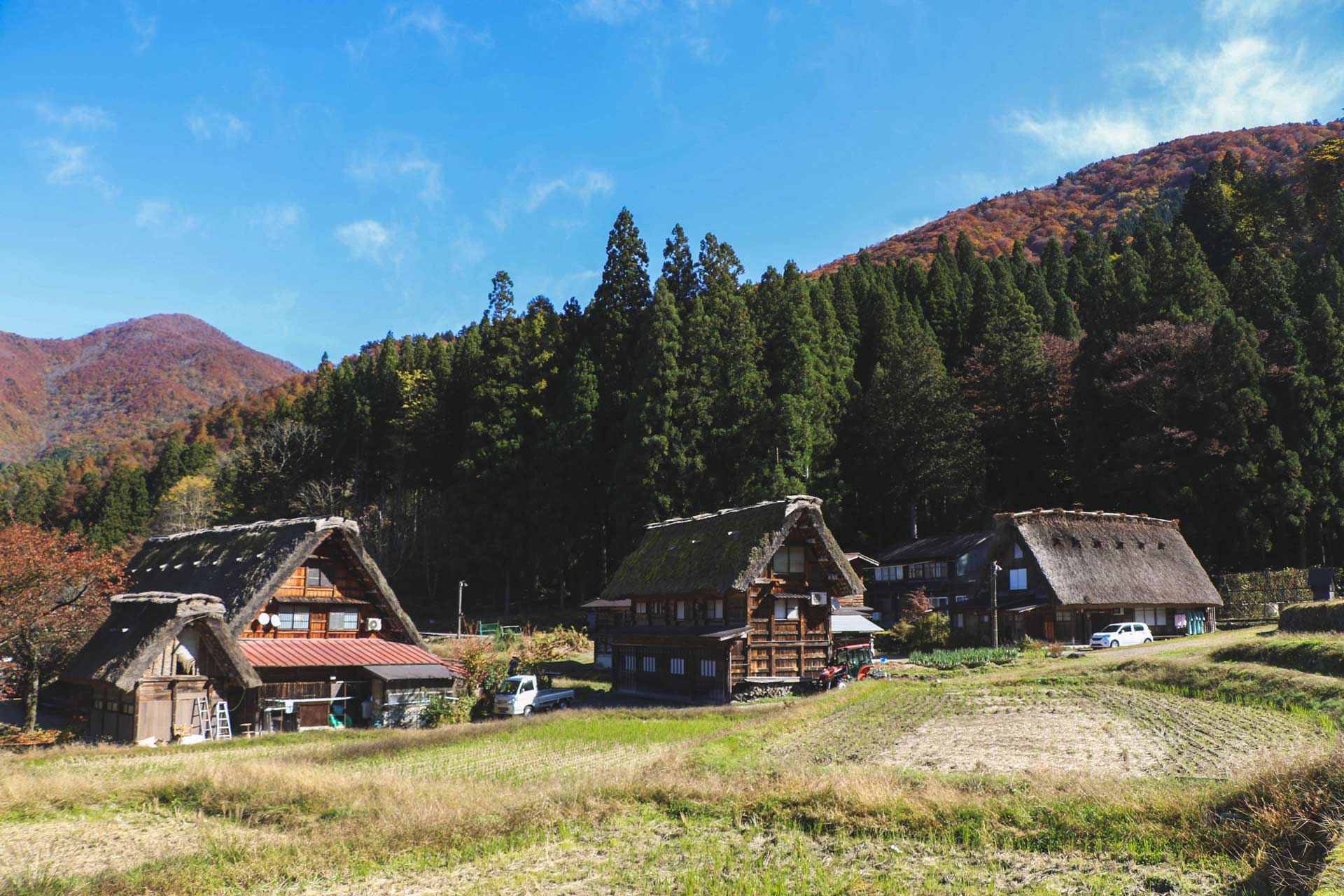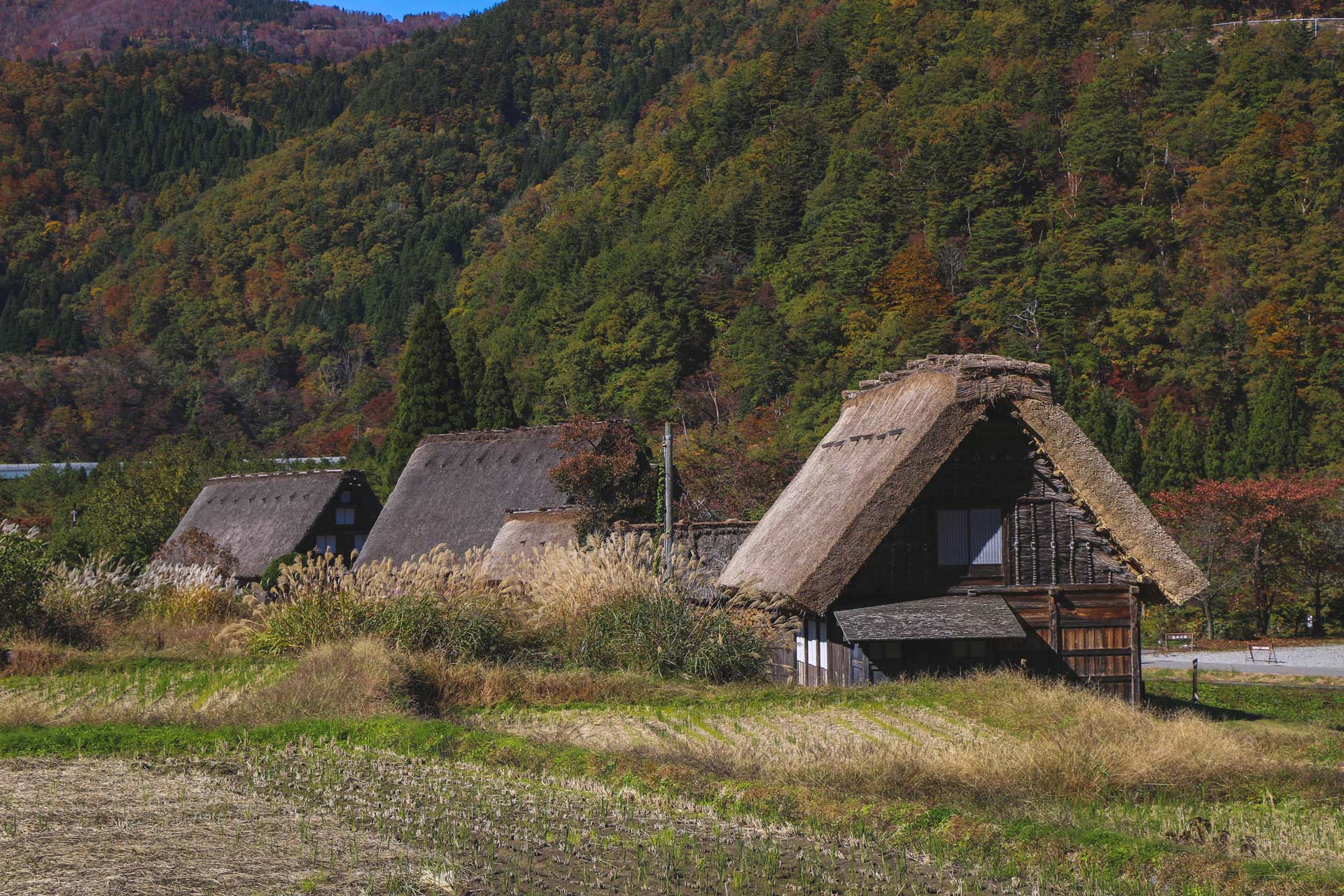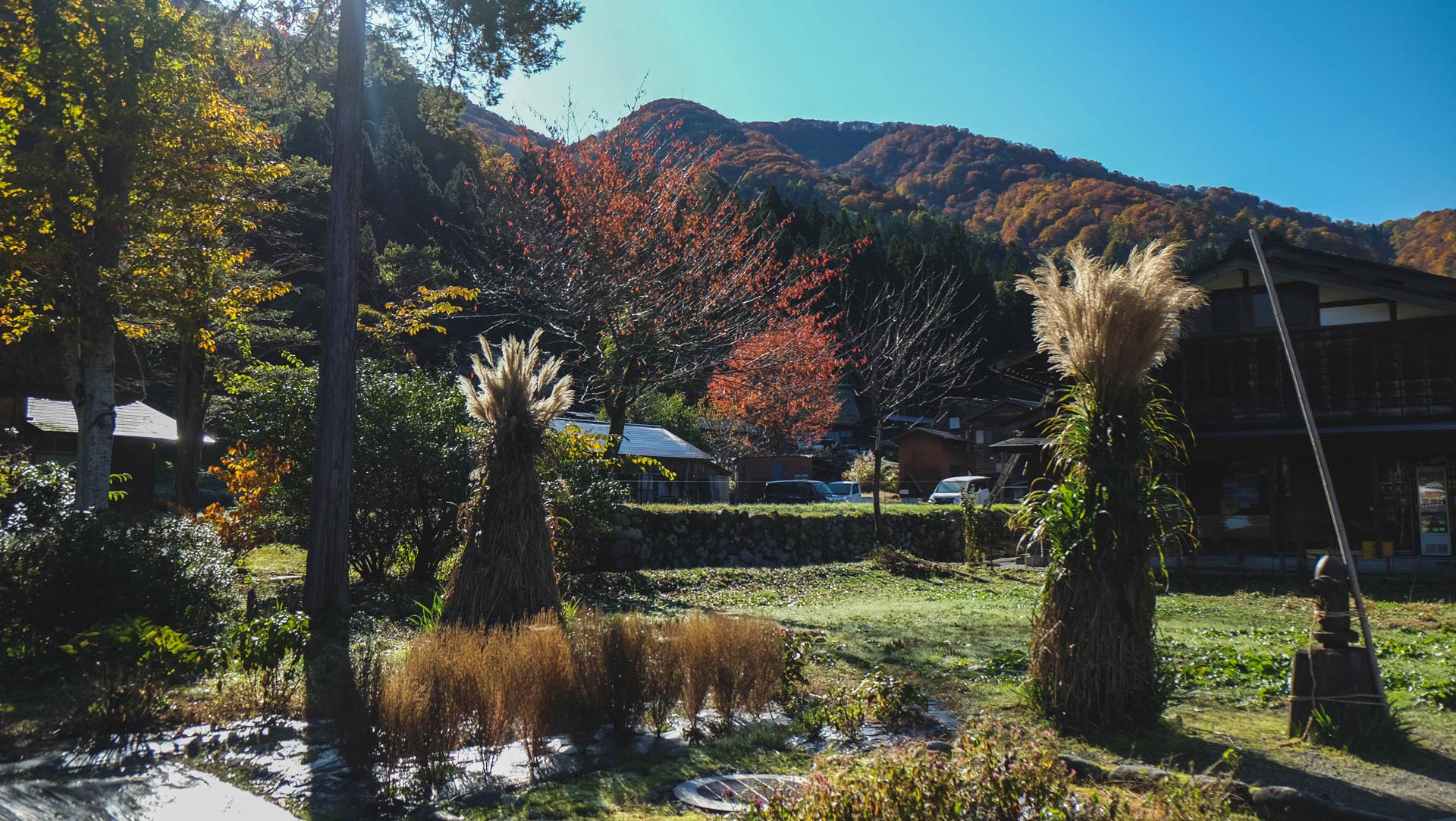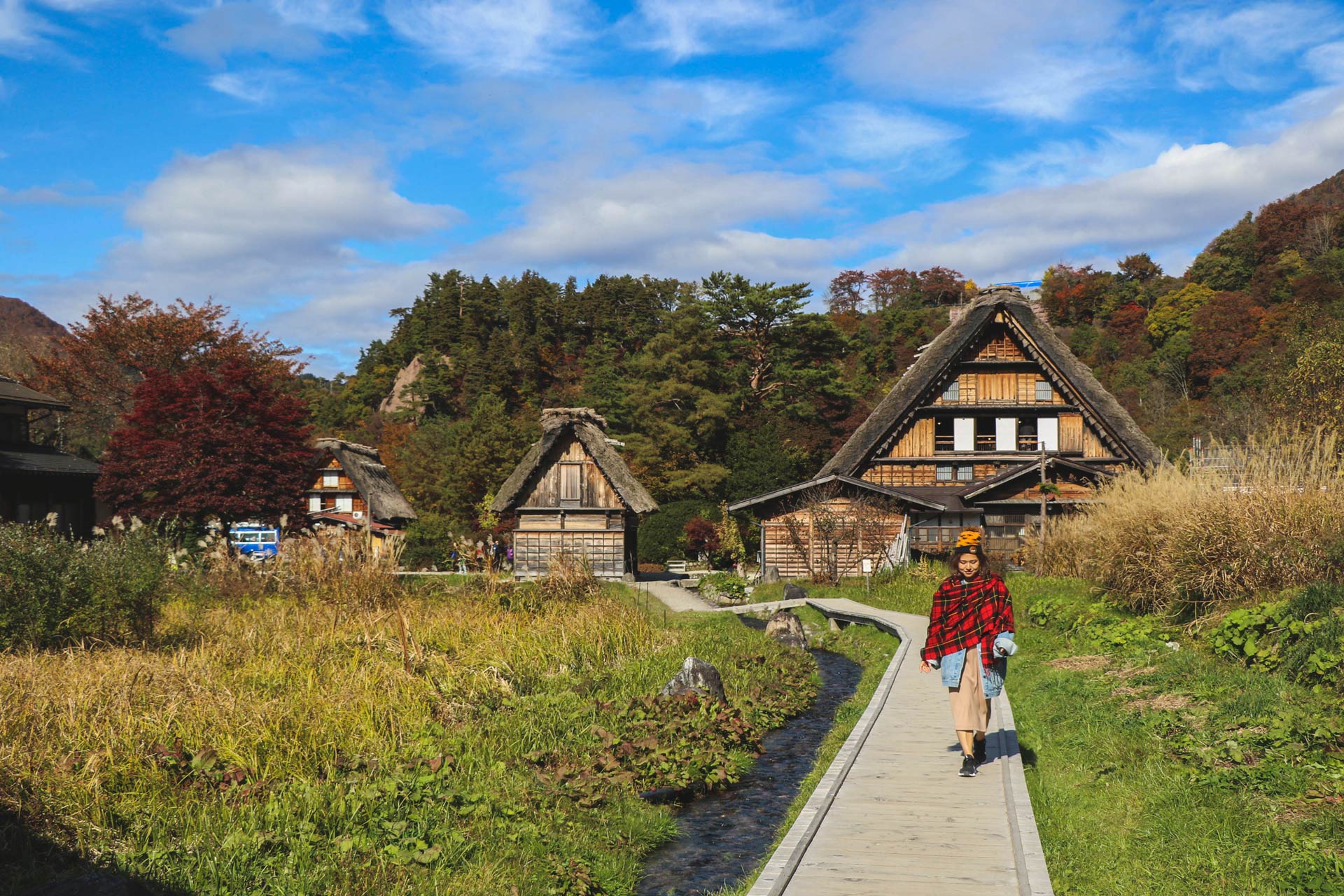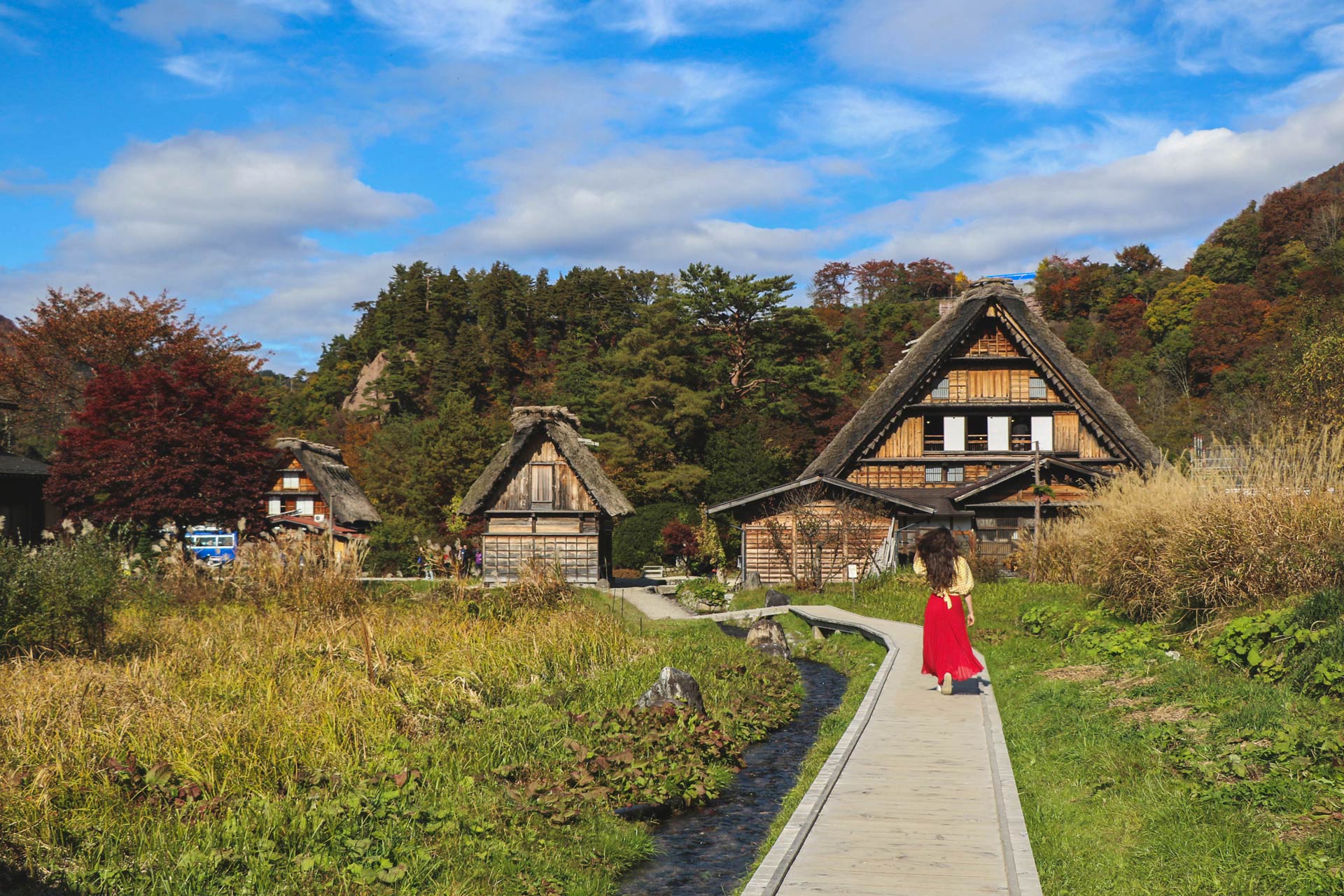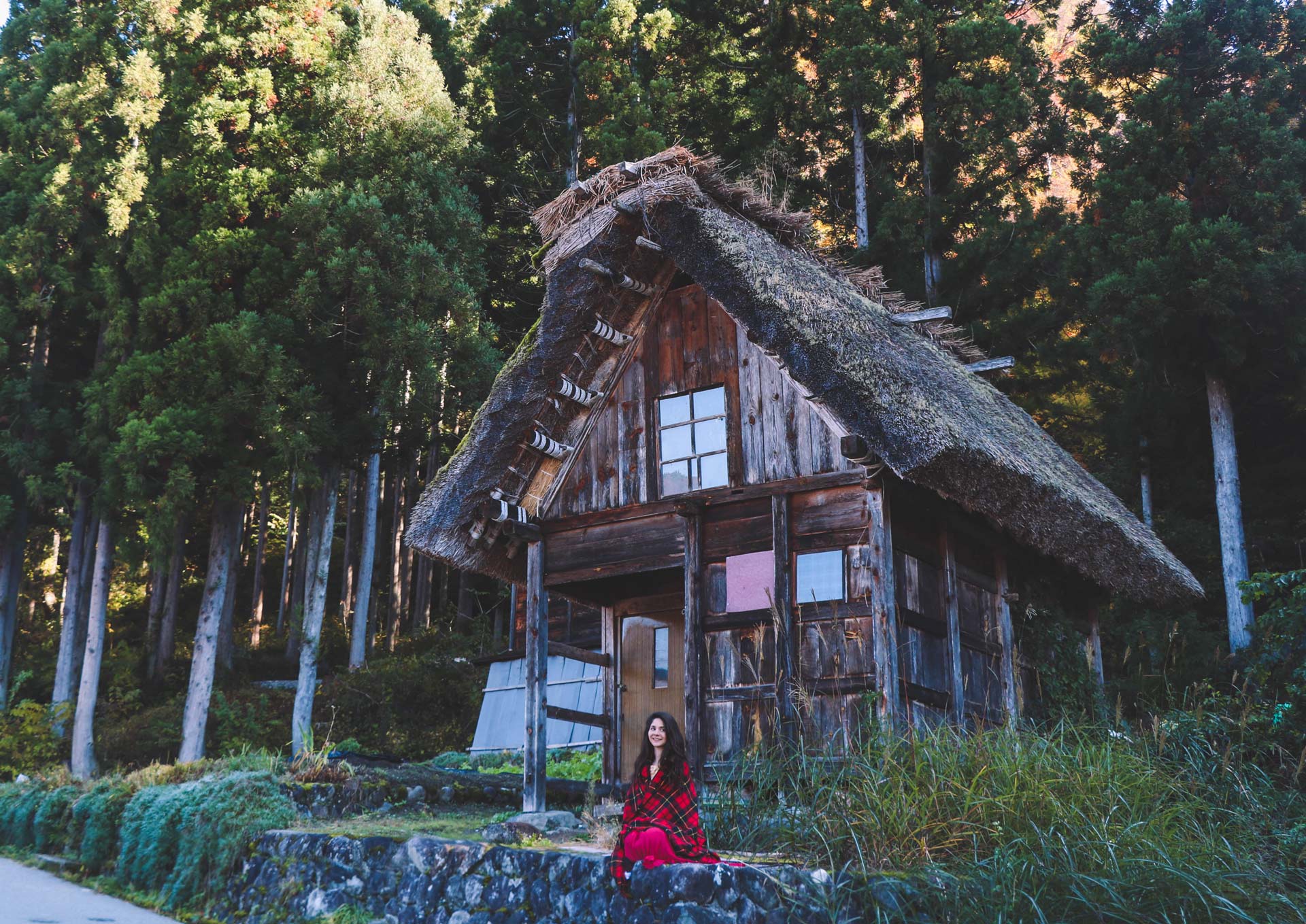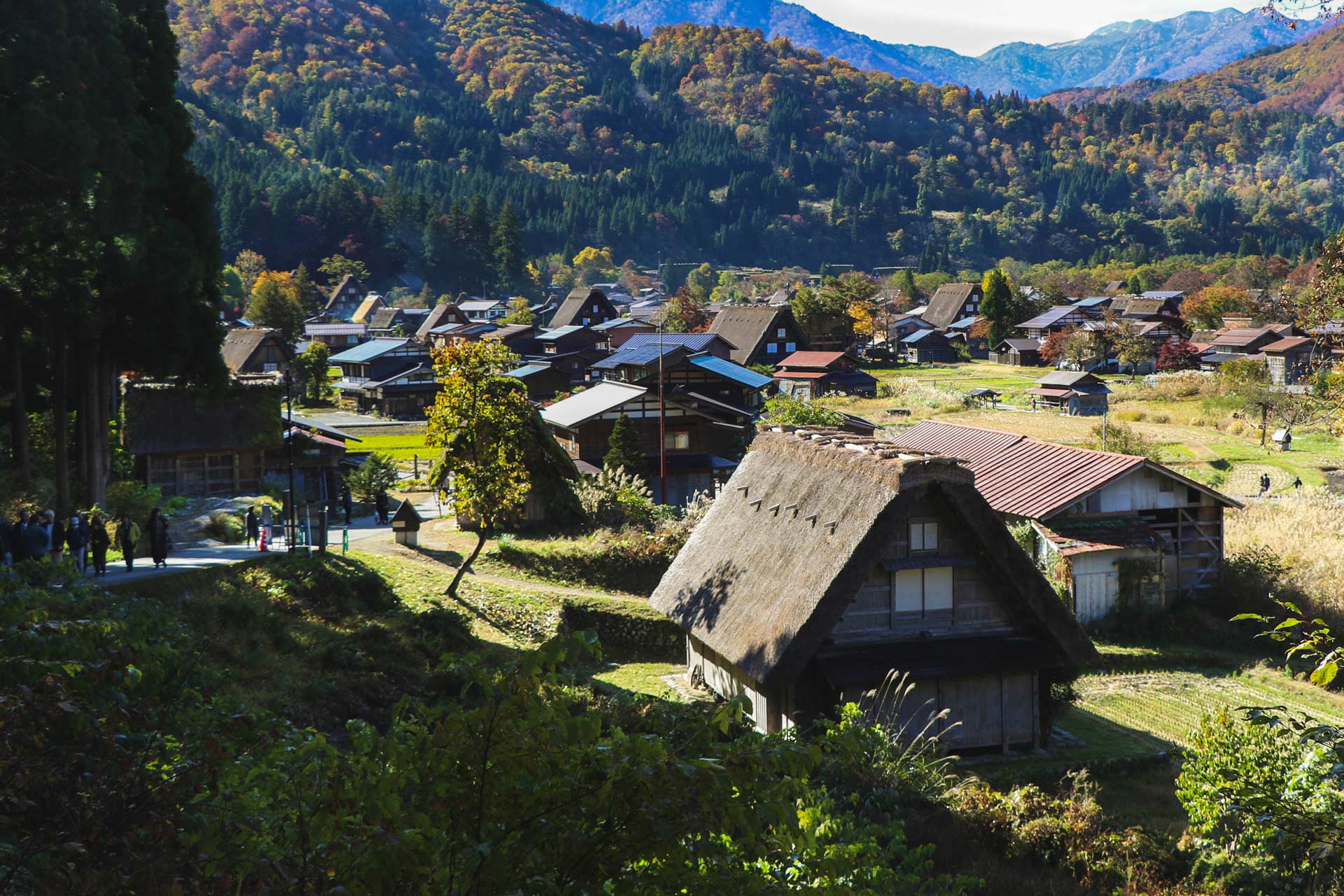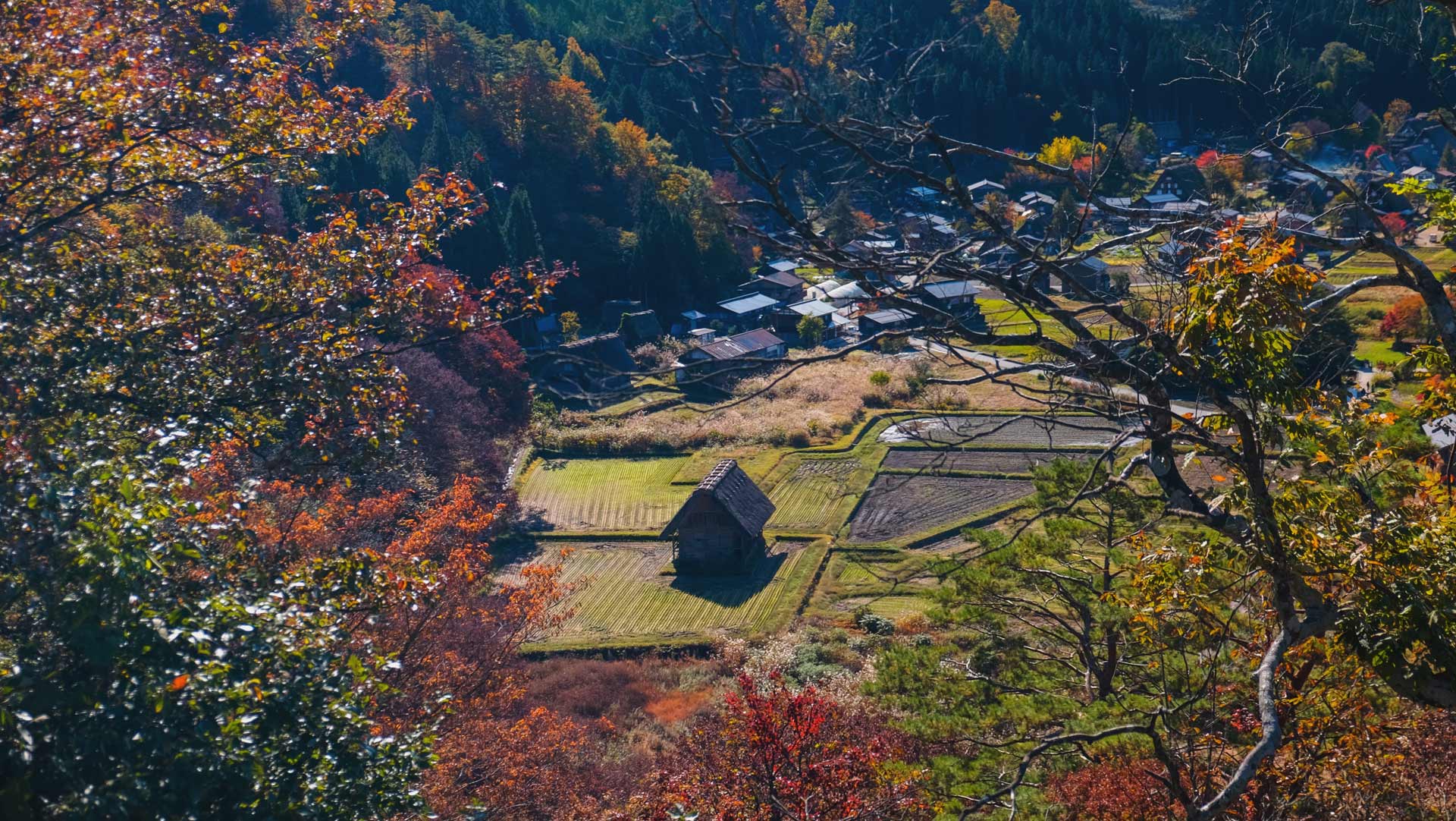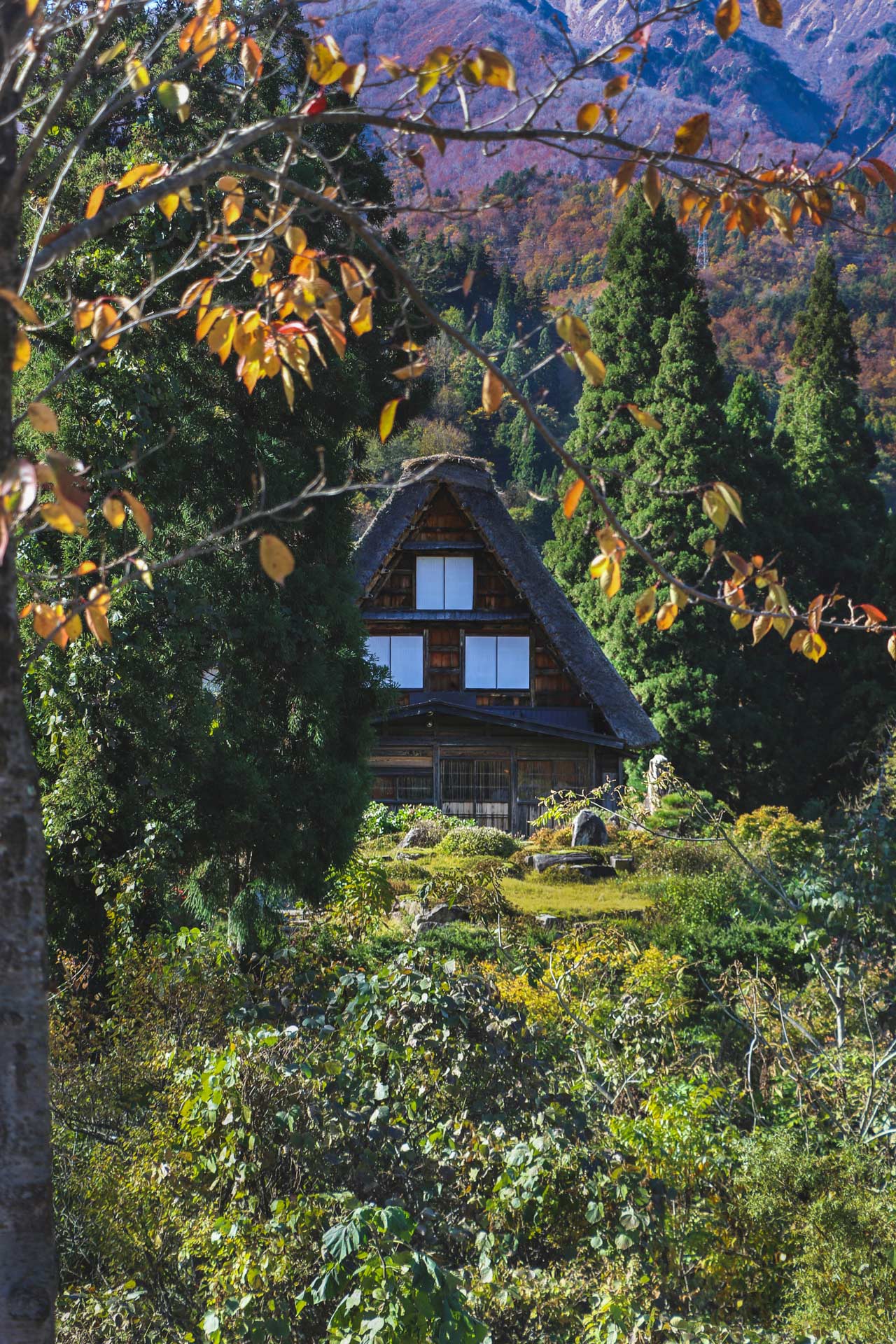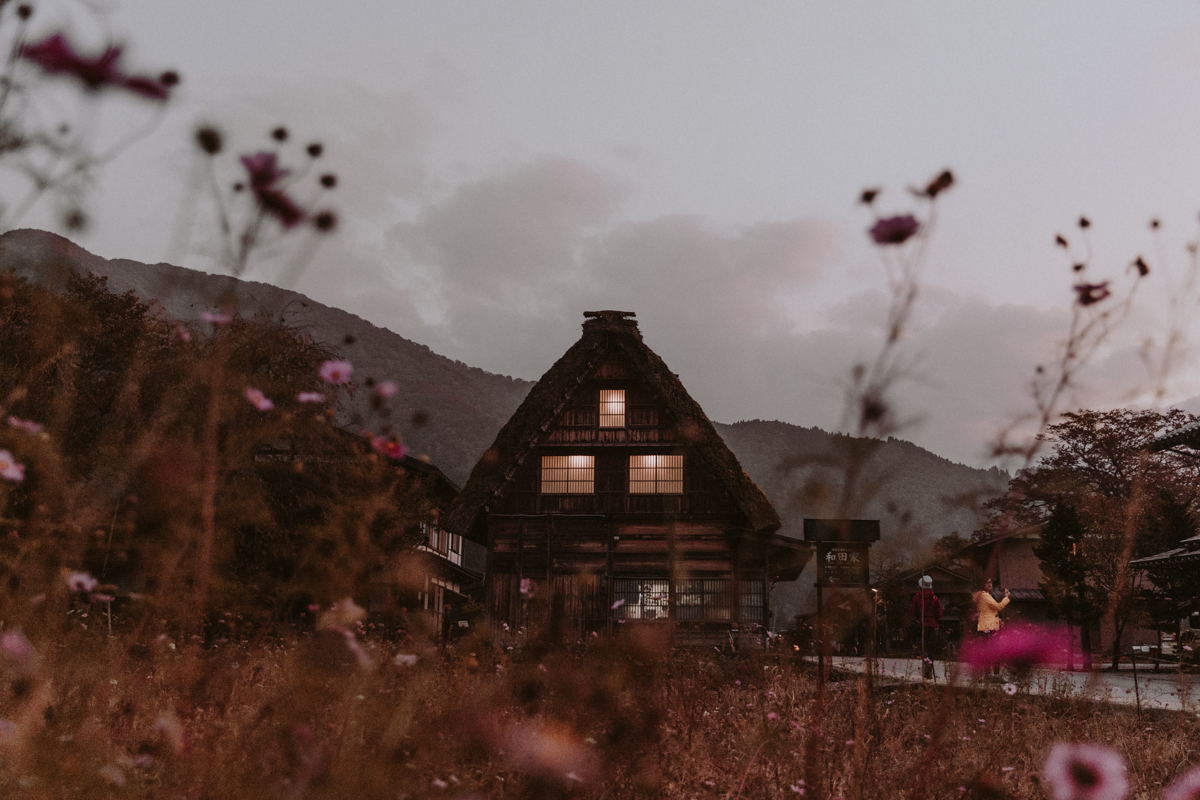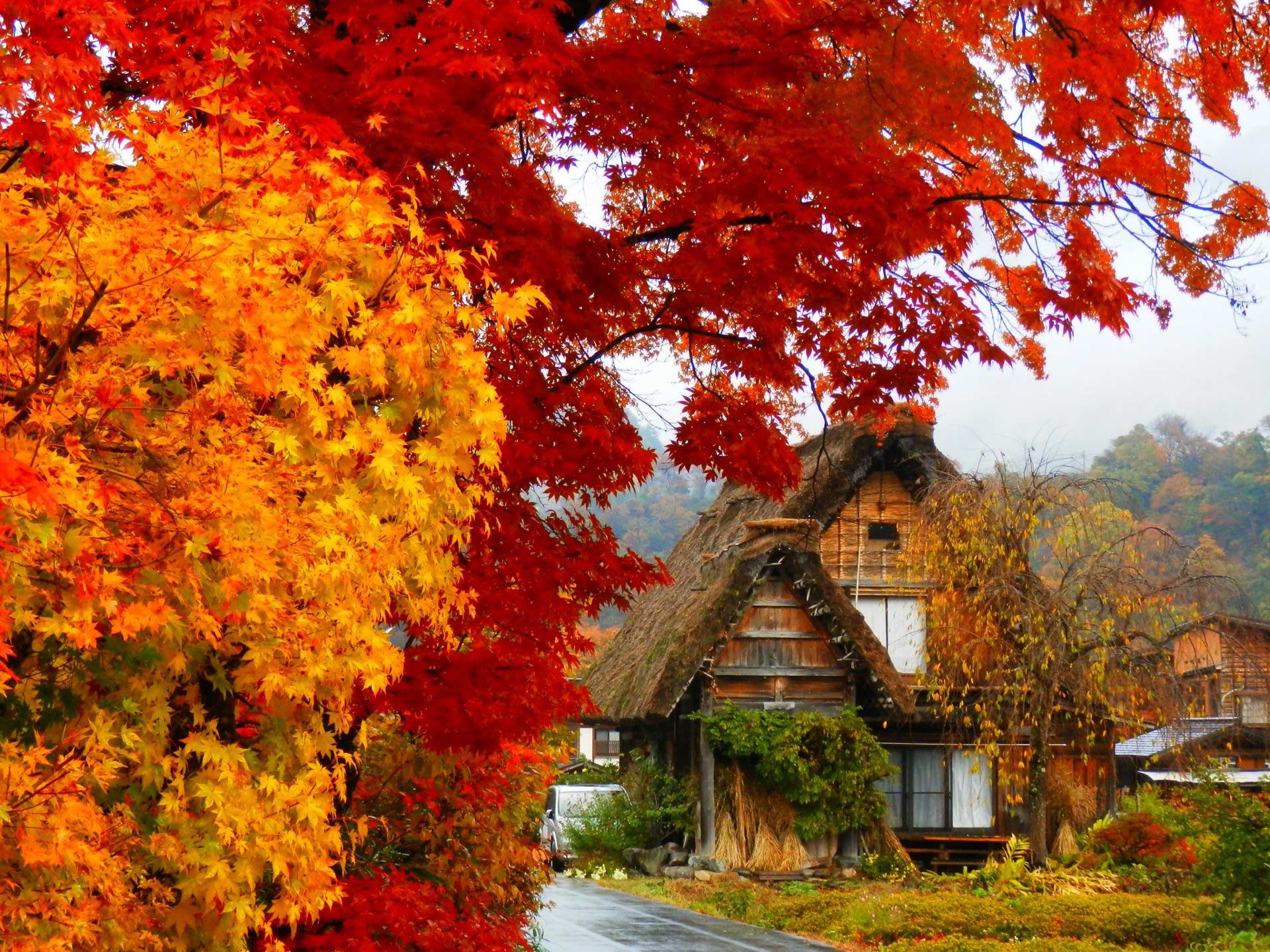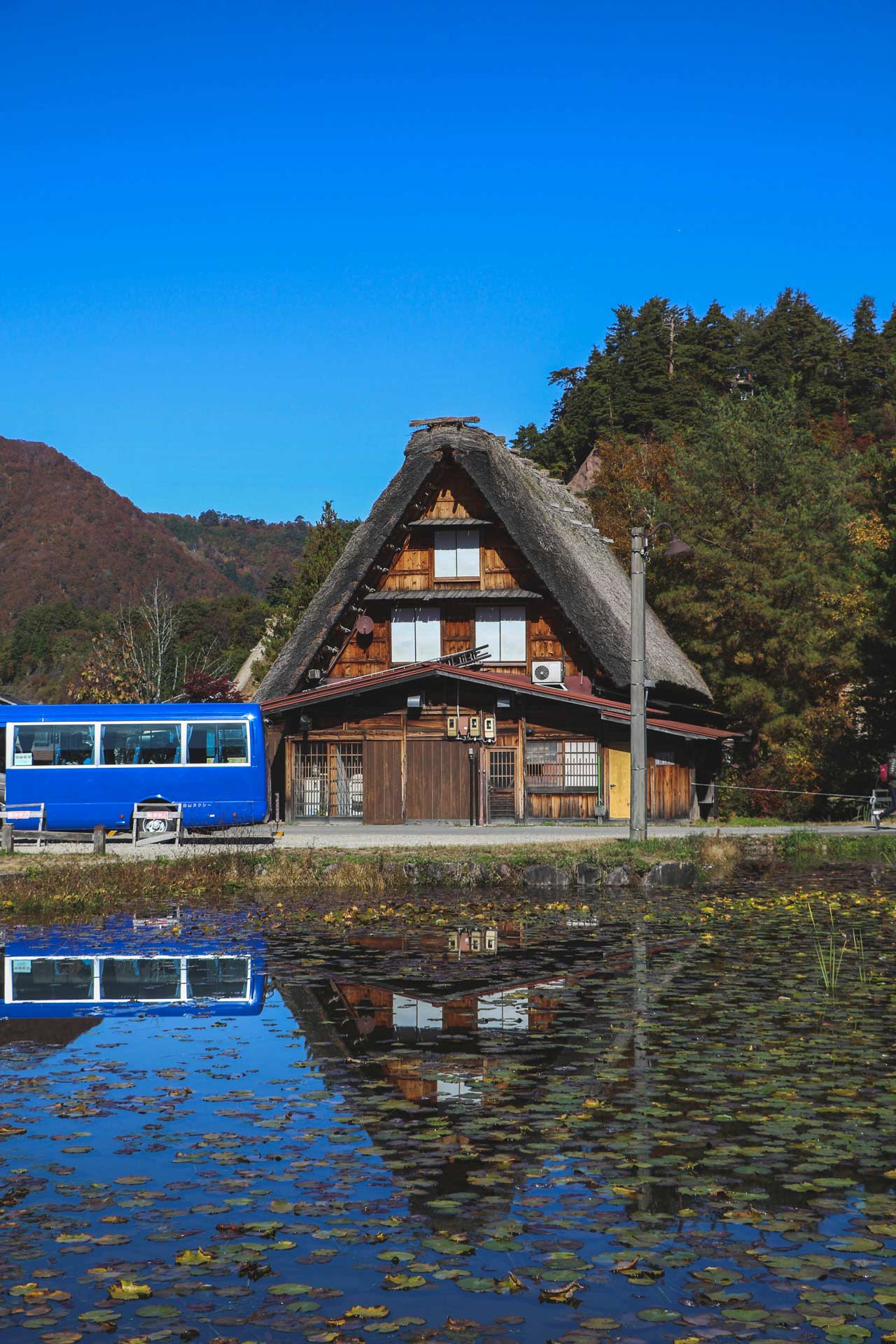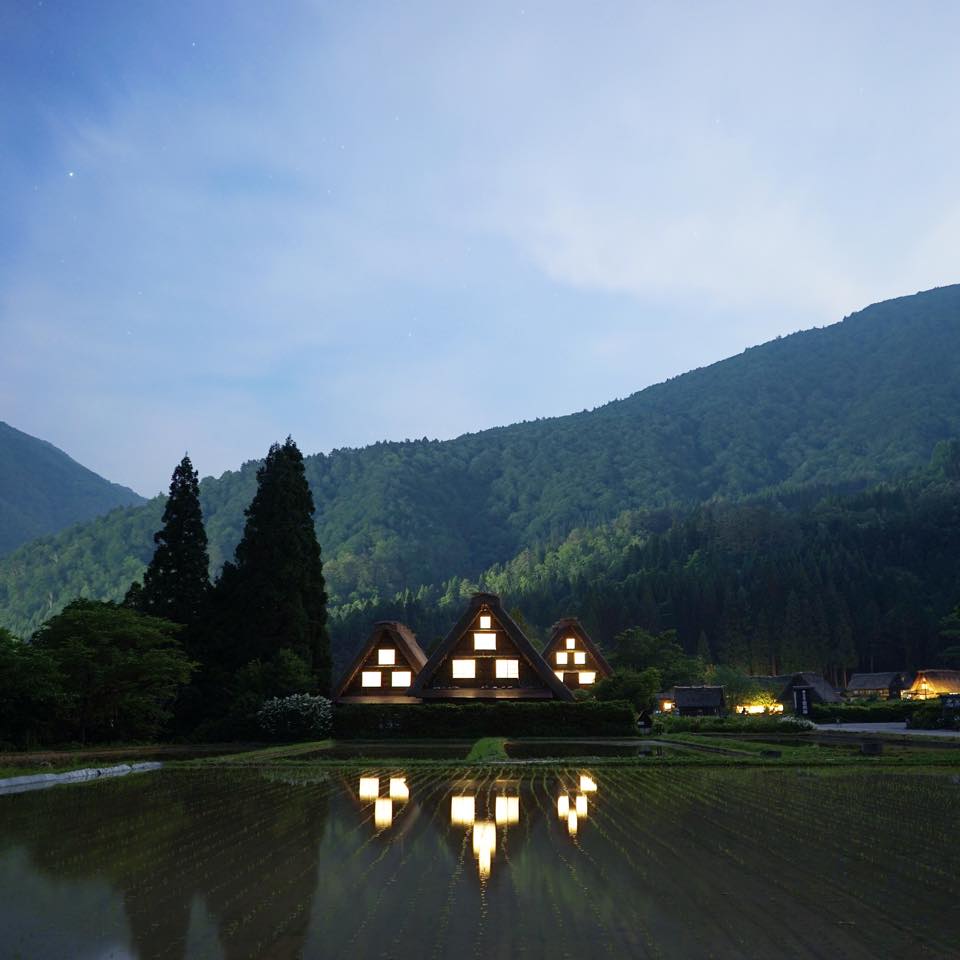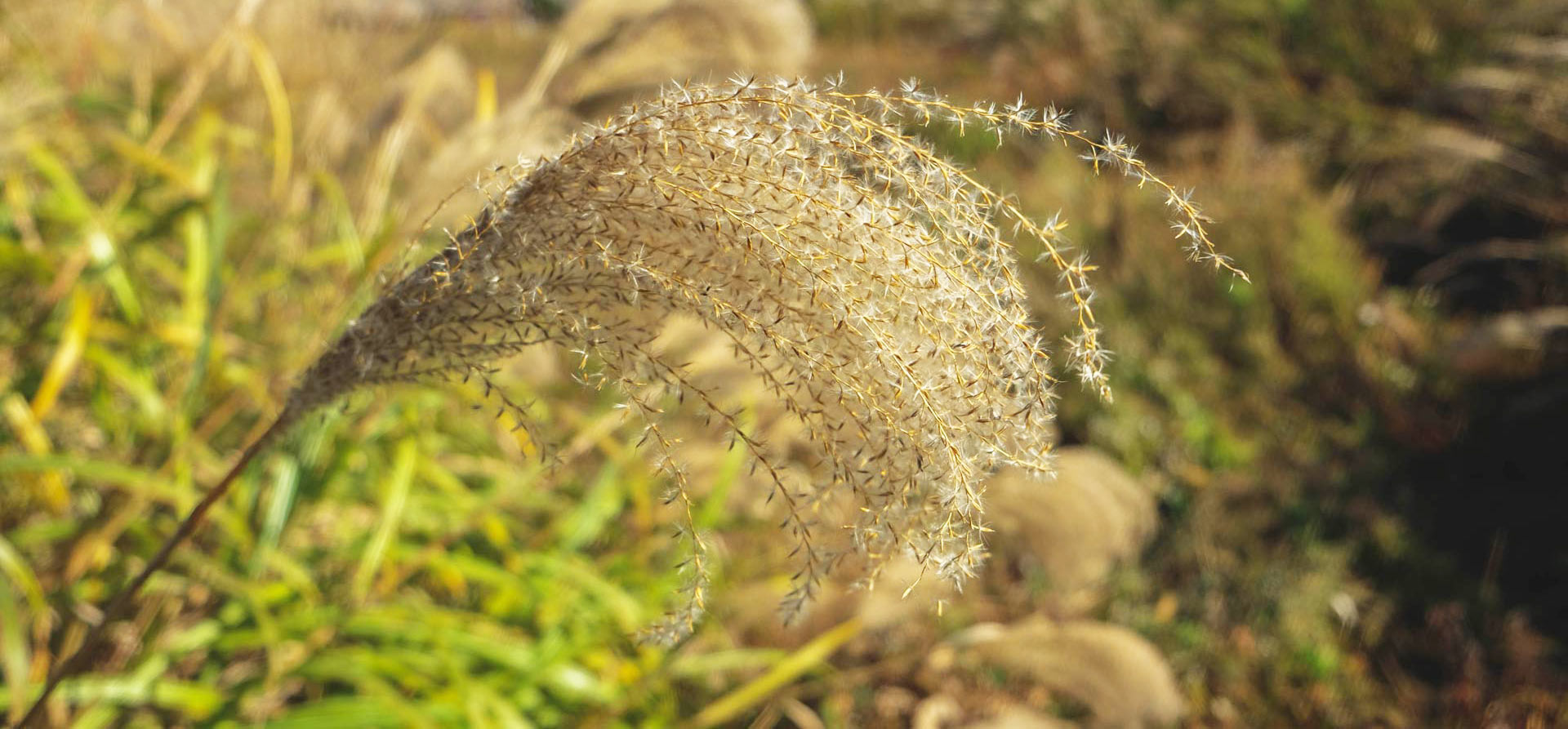n a crisp autumn morning, the surrounding peaks of a mountain plateau are painted in colours of orange, red and yellow. Cosmos flowers carpet the fields and golden pampas grass waves gently in the breeze. In the centre of the plateau, a cluster of fairytale thatched-roofed houses sits untouched and cutoff from the outside world, a feathery mist creeping up from their roofs.
You may be surprised to find out that these wooden farmhouses are not located in the Swiss Alps, but instead reside in the Japanese countryside of the Gifu Prefecture. For the Japanese, the idyllic village of Shirakawa-go captures life from a time gone by, preserving the traditional ways of Japanese mountain living dating back to the 1700s.
Showcasing such a rare and untouched glimpse into Japanese history, the UNESCO World Heritage site of Shirakawa-go attracts crowds of tourists from around the world. The main attraction, the Gassho-zukuri farmhouses, are a tribute to the impressive innovation of early Japanese civilisations. These farm houses shield exceptionally well against the harsh cold, do not easily rot and have enough strength to withstand the heavy snowfall of Japanese winters – all amazing architectural feats for the time.
With a pristine backdrop that changes colour with the seasons, Shirakawa-go is stunning to photograph. While the area is most commonly known for its picturesque beauty in winter, if you happen to find yourself visiting in autumn, you won’t be disappointed. Not only is Autumn one of Japan’s most beautiful seasons, it’s also one of the best times to visit Shirakawa-go with comfortable temperatures for exploring the village and full accessibility to the entire site.
In this guide we share our favourite photo locations from our visit to Shirakawa-go during autumn. For more about Shirakawa-go’s history or things to do during your stay, check out our Day Guide to Shirakawago!
Before You Shoot
Because Shirakawa-go is located on a mountain plateau, the sun can be harsh and this can heavily impact your photos. Overexposure due to harsh sunlight is really tough to avoid on sunny days.
For best lighting, take photos during sunrise and sunset. You will also avoid the crowds and in the early mornings you’ll be able capture the mist rising from the thatched rooftops of the Gassho-zukuri, adding plenty of atmosphere to your photos. The easiest way to capture photos at sunrise and sunset is to stay overnight in a Gassho-zukuri farmhouse.
If you miss out blue skies during your visit to Shirakawa-go, count that as a blessing in disguise. An overcast backdrop allows for great photos to be taken at any time during the day. For me personally, a cloudy grey sky is much more preferable as it adds a nice mood to the area.
Despite this, we visited on a clear blue sunny day and arrived around 10am. Due to our schedule, we weren’t able to be flexible with our visiting times, but despite the unideal photography conditions, our photos still managed to turn out ok! You will be able to see, however, the harsh shadows the full sun casts over the Gassho-zukuri.
Other than lighting another difficulty you might stumble upon is that it can be really hard to find some of the houses you see in photos online. In photos, the spatial distance between houses is distorted and specific angles or viewpoints can make houses appear closer to each other than they actually are. Locations 2 & 4 listed below are a classic examples of this. The houses look like they are near each other, but because the area is so big they are actually much farther away. This means you may have to walk a great distance to get the framing you’re looking for.
Photo Locations
Tenshukaku Observatory (天守閣展望台) - Ogimachi Castle
or the perfect postcard picture, Shirakawa-go’s most famous viewpoint is the Tenshukaku Observatory, which overlooks Ogimachi Village and the mountain plateau in its entirety. There’s plenty of room up here to set up a tripod and take some awesome photos.
Reaching this viewpoint is relatively easy, with two points of access. The first and most comfortable is via the Shirakawa-go shuttle bus.
In autumn, the observatory shuttle bus departs in front of the Wada House every 20 minutes between 9AM – 3:40PM and costs 200 yen one-way. If you have a car you can also drive, but please note that roads are closed in winter.
Alternatively, you can enjoy a 20 minute walk up to the observatory. Choosing this option was great because we also scored some unique photos along the way! Please note the promenade up to the observatory is closed in winter.
Gassho Zukuri Triplets (Shirakawa-go Three Houses)
nother iconic Shirakawa-go photo spot is the Shirakawa-go Three Houses. Located quite a bit further out from Shirakawa-go’s main street, Shirakawa Kaido, this area was very much free from tourists – in fact, unless you were looking, you wouldn’t even know it existed.
Not clearly marked on any of the tourist maps, this area of Shirakawa-go was really nice to explore. The houses here seemed more natural and ‘lived in’ than those on Shirakawa-go’s more touristy streets. We found there were some really nice photo opportunities here as well.
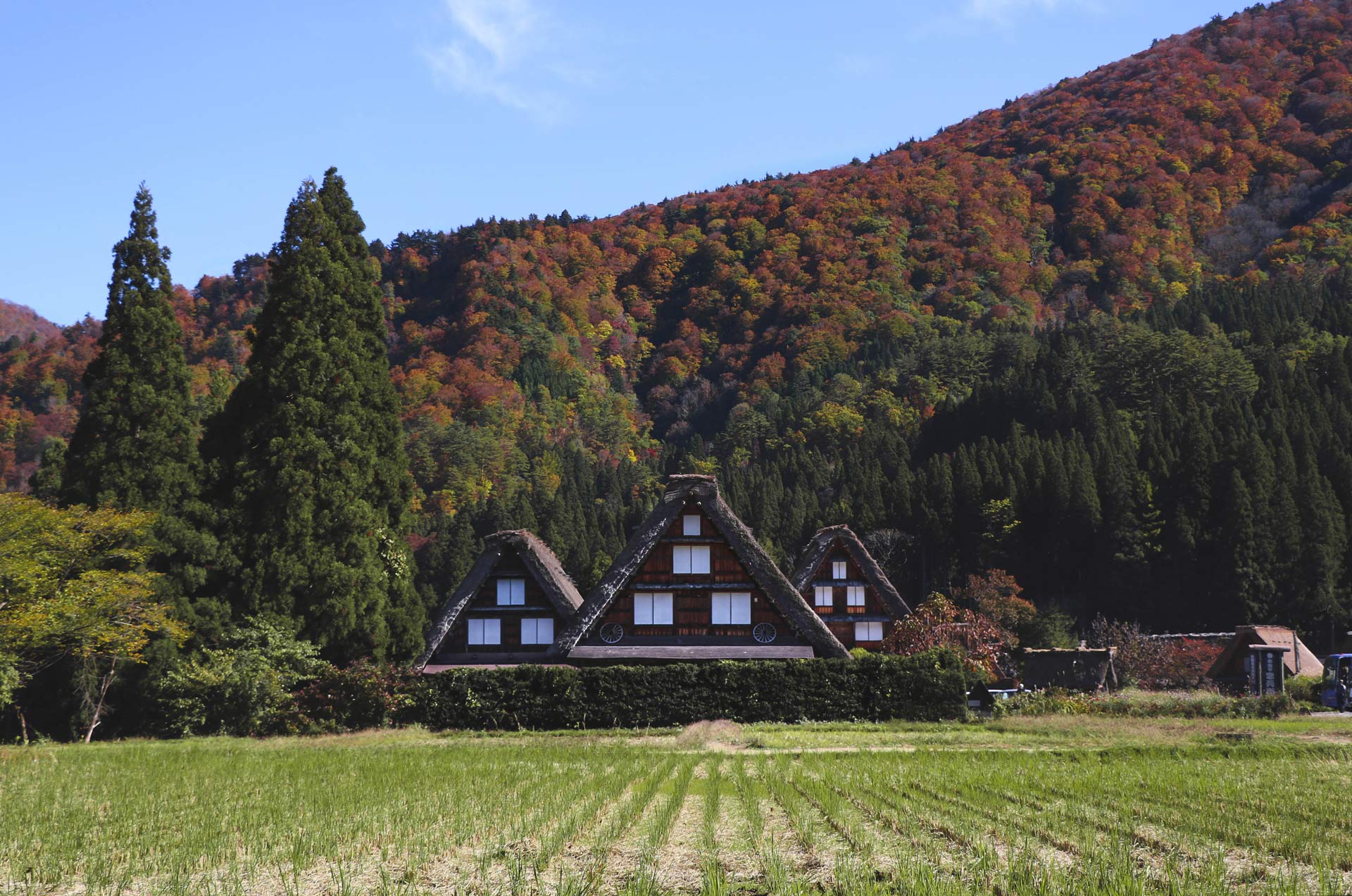
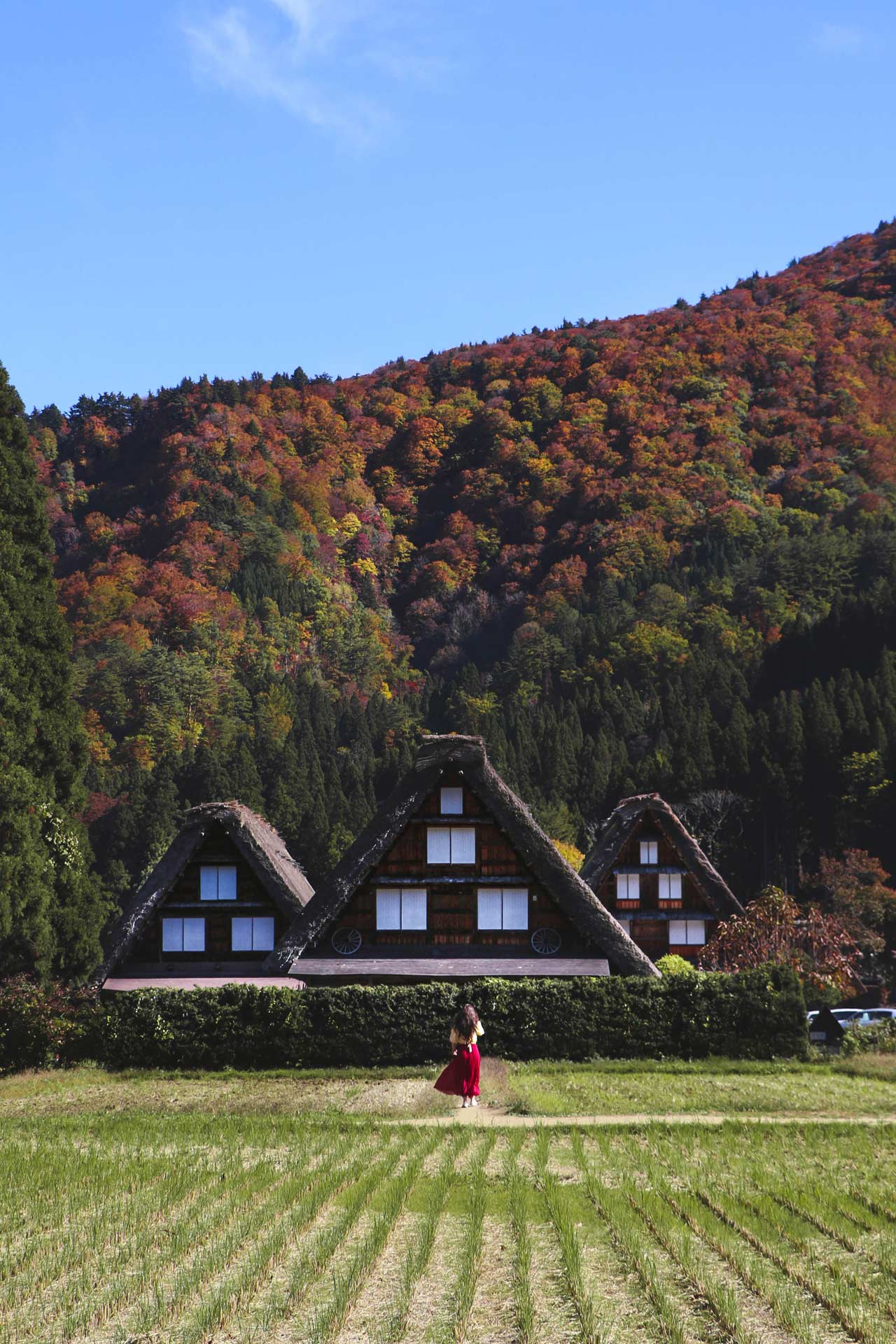
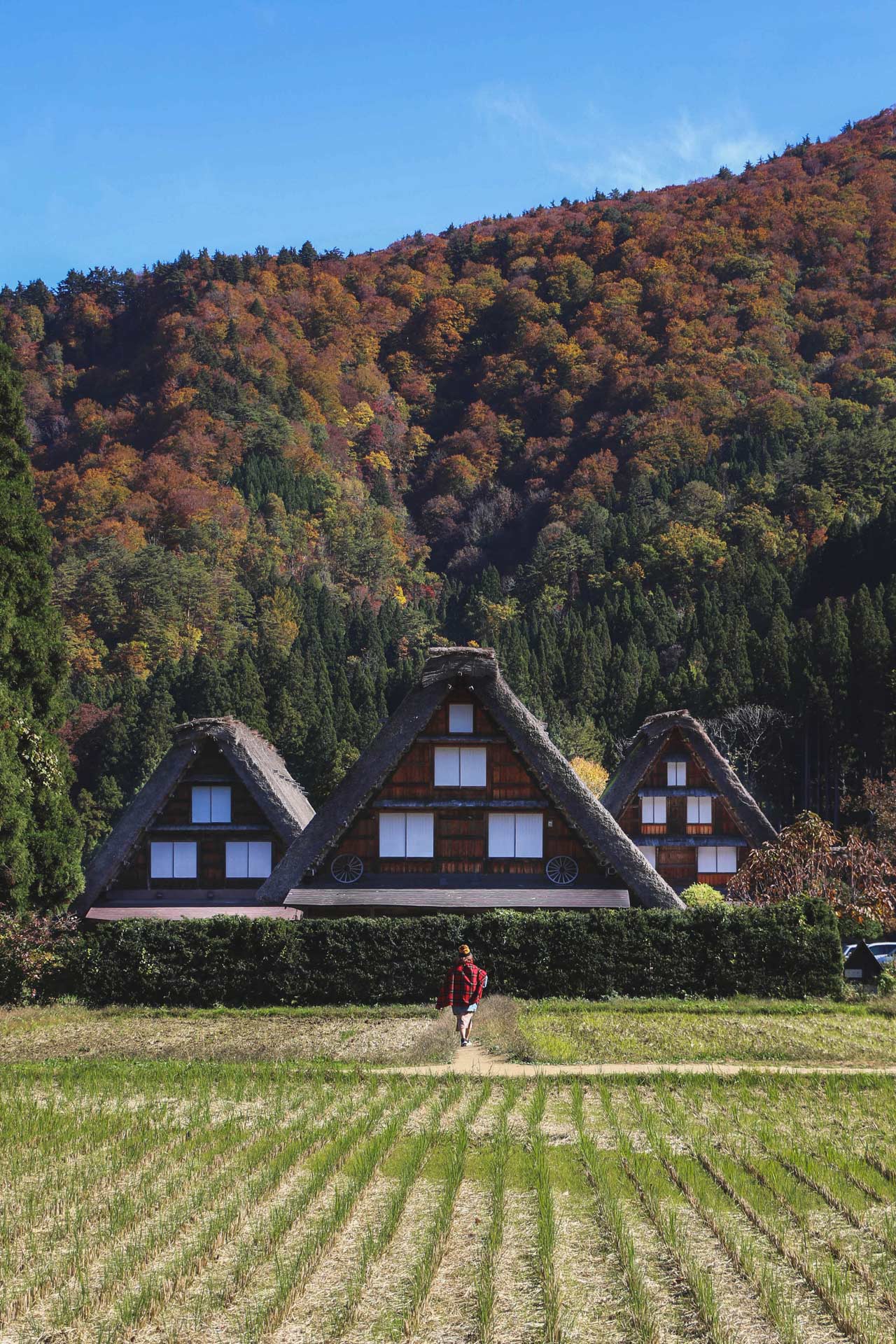
Gassho-zukuri Minkaen (Open Air Museum)
he Gassho-zukuri Minkaen or Open Air Museum is a must-see for keen photographers. Inside are some of the best preserved and oldest Gassho-zukuri farmhouses, which are set among manicured gardens and water features.
For those that don’t know, the Gassho-zukari Minkaen features 26 buildings comprising of houses, watermills, warehouses to store grain, shrines and the main hall of a temple. All buildings have been preserved in their original state, with 9 out of the 26 buildings listed as important cultural property for the Gifu Prefecture.
Inside the museum grounds, there is a handmade soba restaurant, a shop and rest areas. If you’re looking for the particular house featured in the pond below, it’s called the Matadate Shed and it’s featured as number 12 on this Gassho-zukuri Minkaen map.
Opening hours are from 9am – 4pm and the entry fee is 600 yen for adults and 300 yen for children.
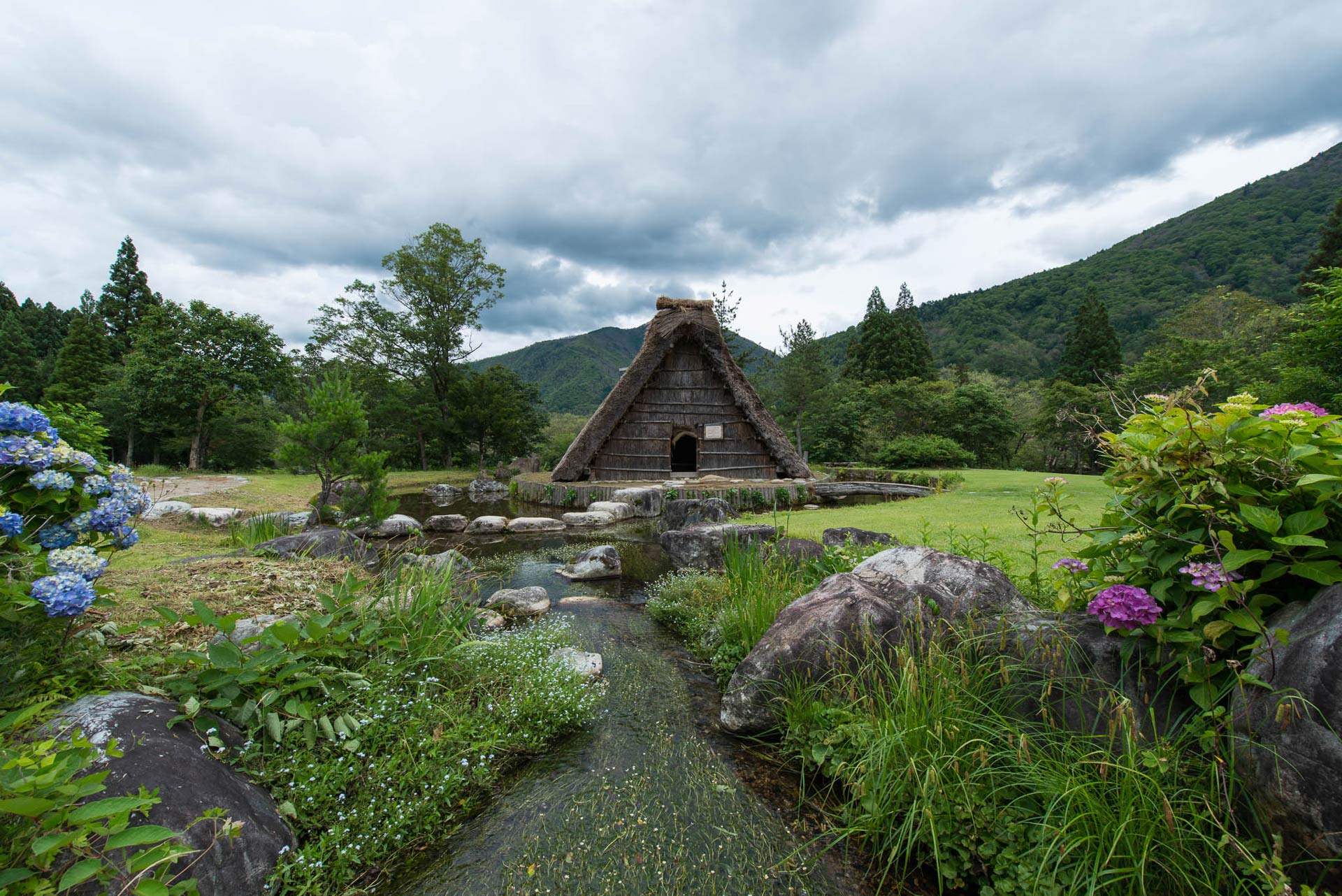
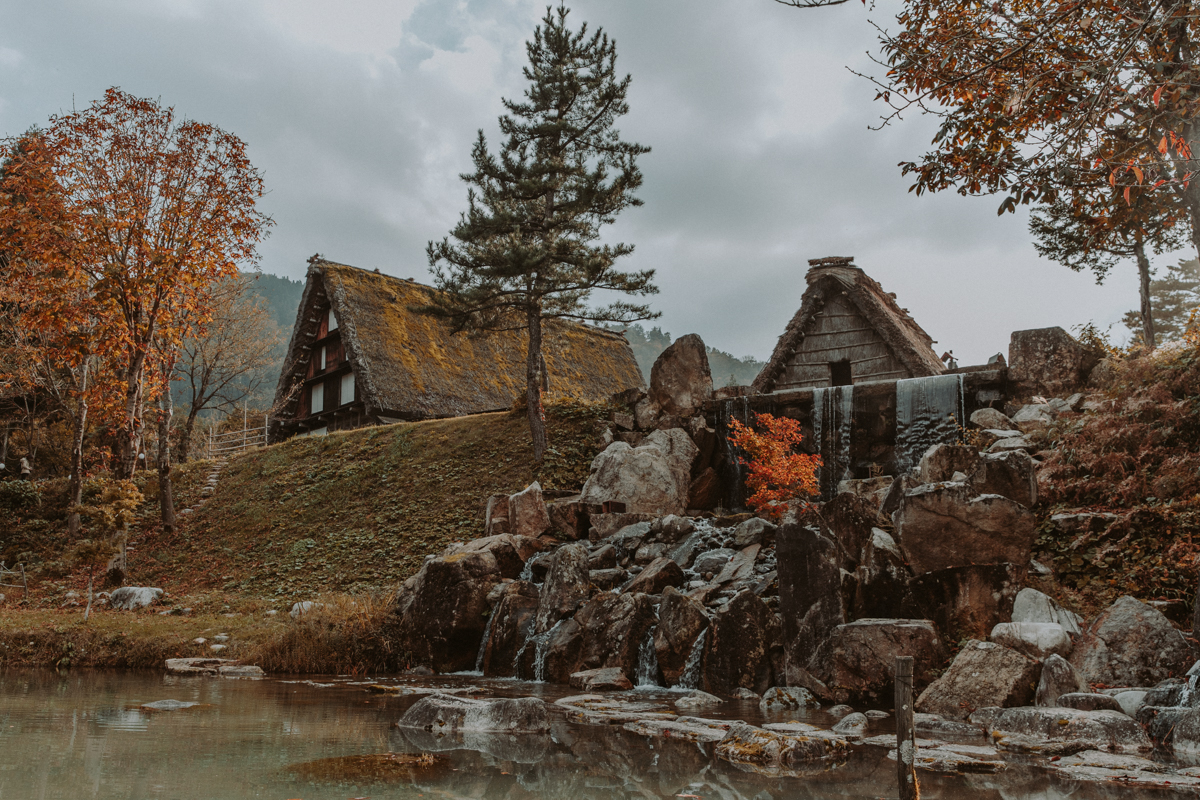
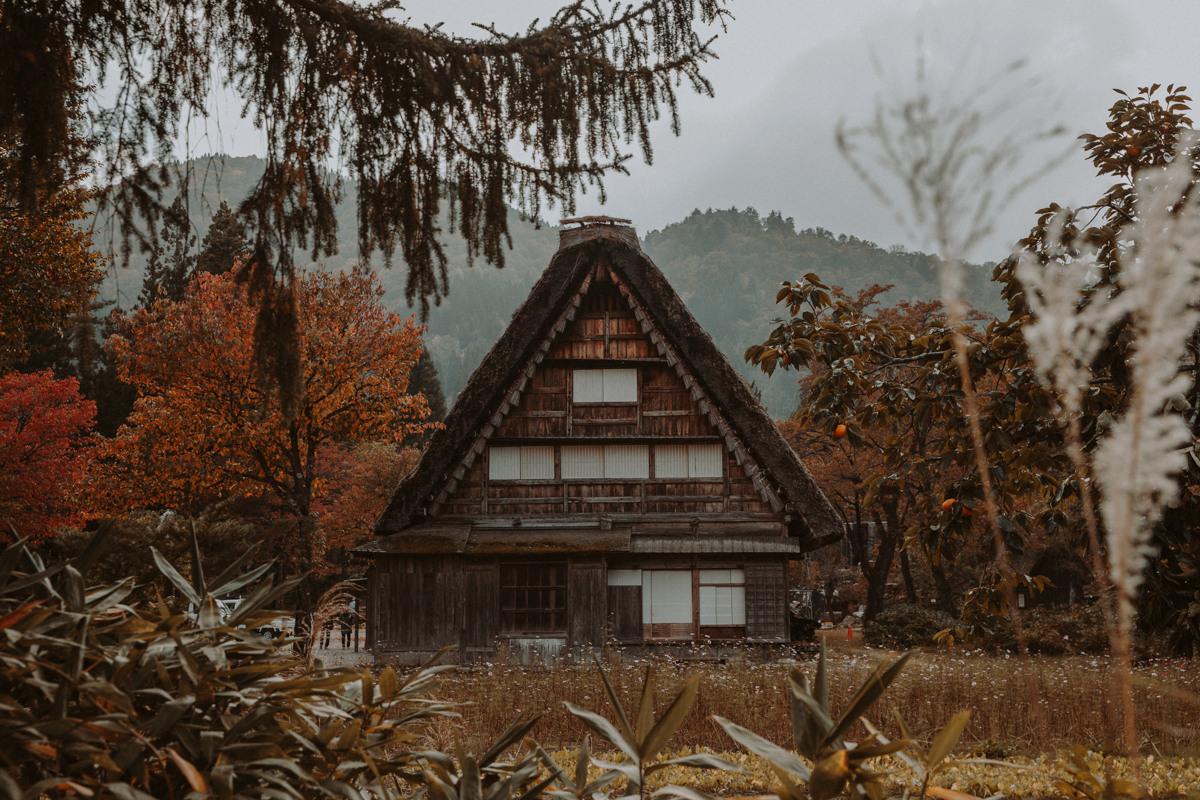
Houses Along the boardwalk
n your way past the Wada House, take the route off the main road to find a small wooden boardwalk that crosses a lily pond. If you position your camera in the right angle, you can get a nice shot of the boardwalk, with three Gassho-zukuri houses aligned diagonally in the background.
Luckily, this area is slightly tricky to find so there aren’t too many crowds allowing you to get a clear shot walking across the boardwalk. If you are traveling to Shirakawa-go outside of autumn, this area may look very different. In summer, it is overgrown with greenery and no pond is visible and in winter it may be covered up with snow or ice.
Shabby Shack
n our way up to the Tenshukaku Observatory, we passed the most cutest Gassho-zukuri farmhouse. It was a little run down and smaller than the other houses in the area but had its own cute little charm.
I absolutely loved the pine trees in the background and the shade also provided great lighting for a photo. This little gem turned out to be one of my favourite Shirakawa-go photos.
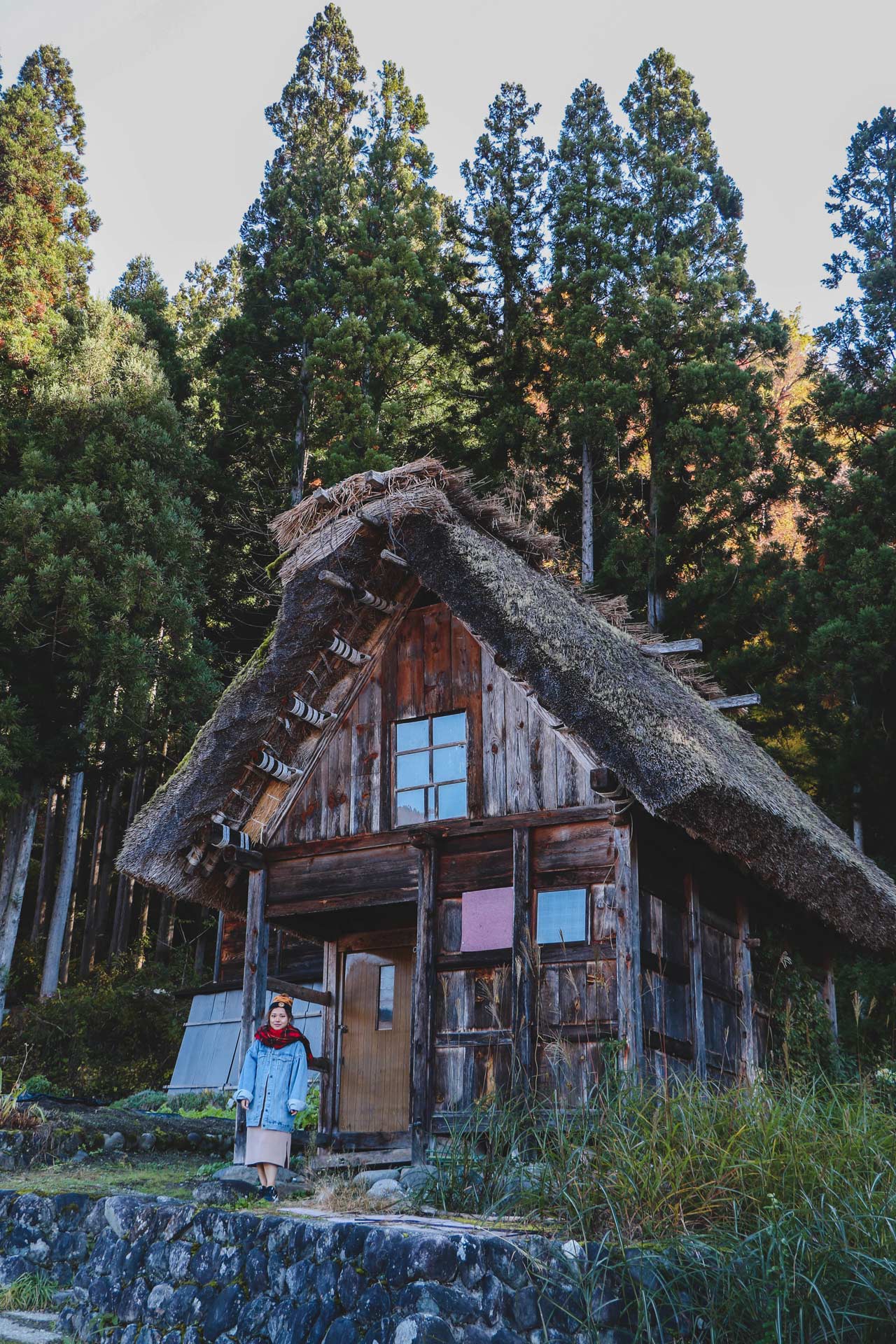
Autumn Framing
he stunning foliage of the autumn months provides such a lovely backdrop for photos at Shirakawa-go, but it also allows for creativity!
Using the autumn leaves and flowers to frame your photos can elevate your photography and make the end product look even more spectacular.
Inside a Gassho Zukuri House
or a unique perspective, consider a photo from within a Gassho-zukuri farmhouse. If you’re not able to stay within a Gassho-zukuri farmhouse, the Wada House is open from 9AM – 5PM daily and inside you can see various artefacts and daily items used by the Wada family – one of the wealthiest families and village leaders of Ogimachi.
Entry is 300 yen for adults and 150 yen for children.
The shoji screens create soft and ambient lighting formations, while the open shutters frame the Shirakawa-go backdrop as if it were a series of panorama paintings hung up on a wall.
Upside Down House Reflections
ne of the other popular photos in Shirakawa-go is the upside houses. In mid-may, the rice paddies are filled with water just before the rice is planted, creating an upside down mirrored reflection of the houses on the water’s surface.
As the rice crops have been harvested and dried out by autumn, the opportunity to capture this type of shot is far more difficult. You can still capture some of these type of photos in autumn, when the houses reflect off some of the ponds.
Need a place to stay in Shirakawa-go? Use our handy widget to find the perfect accommodation:



